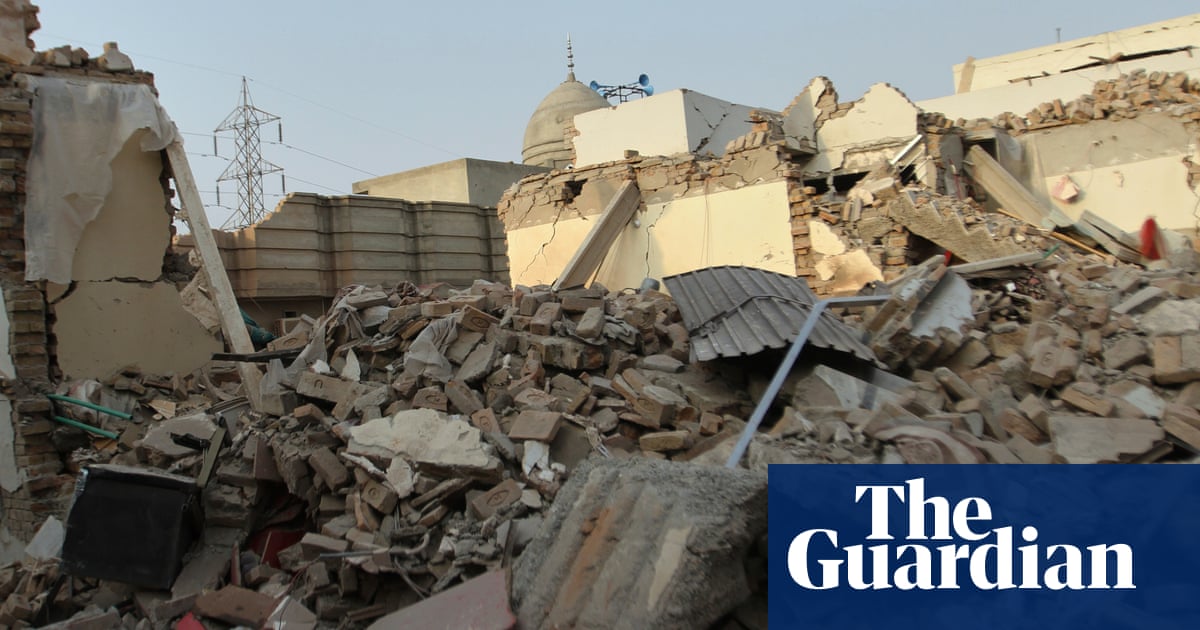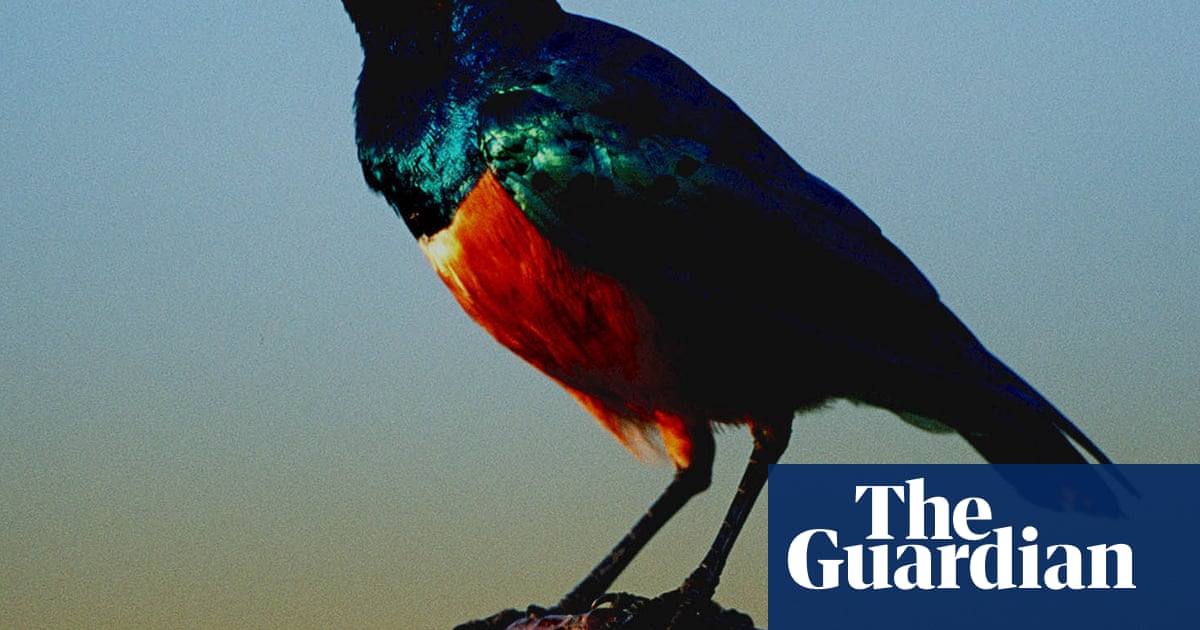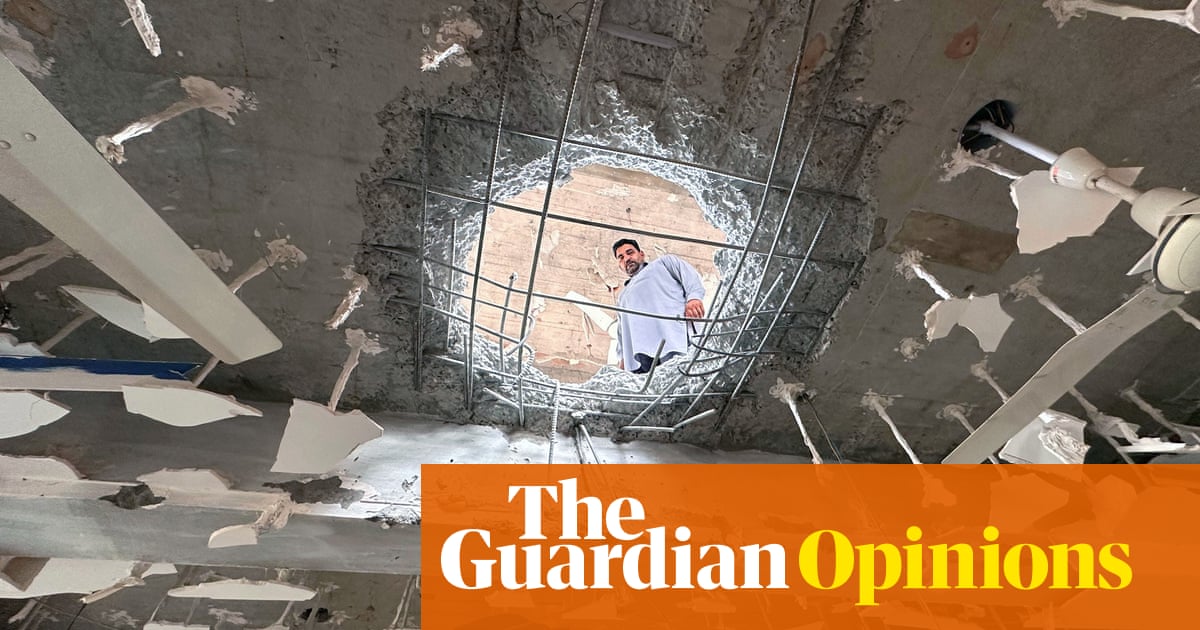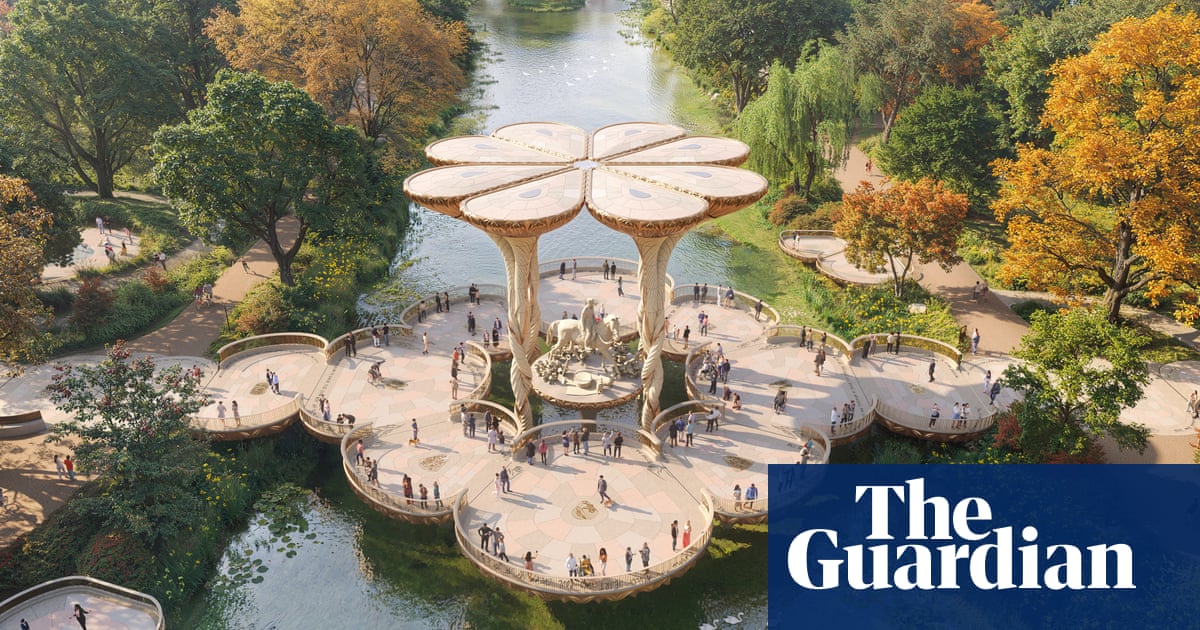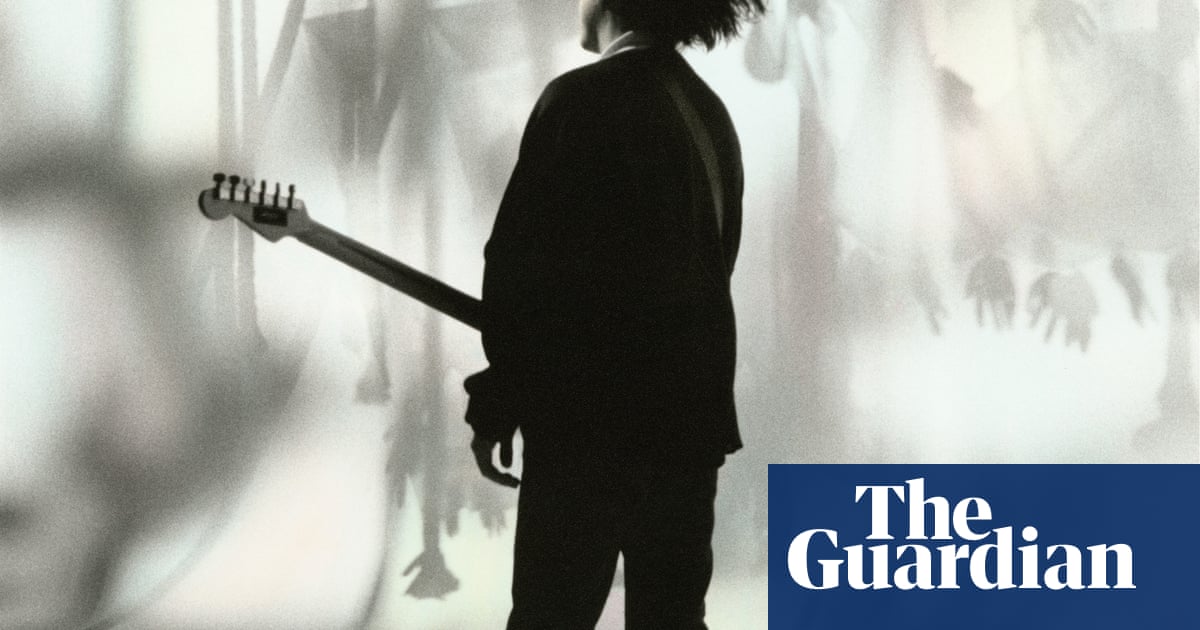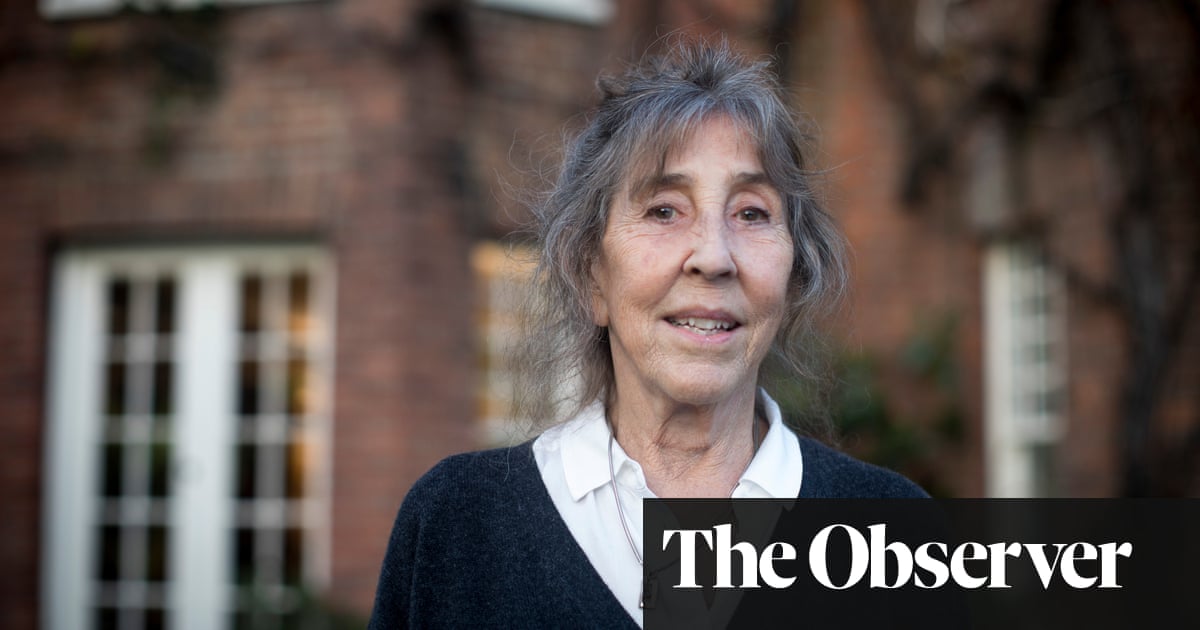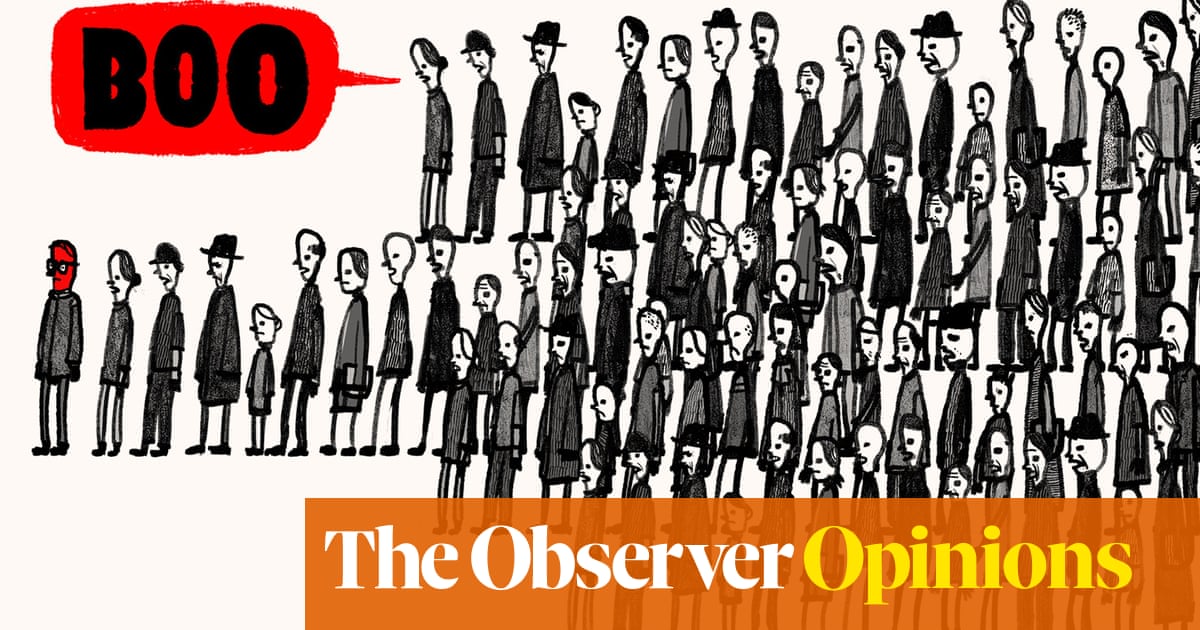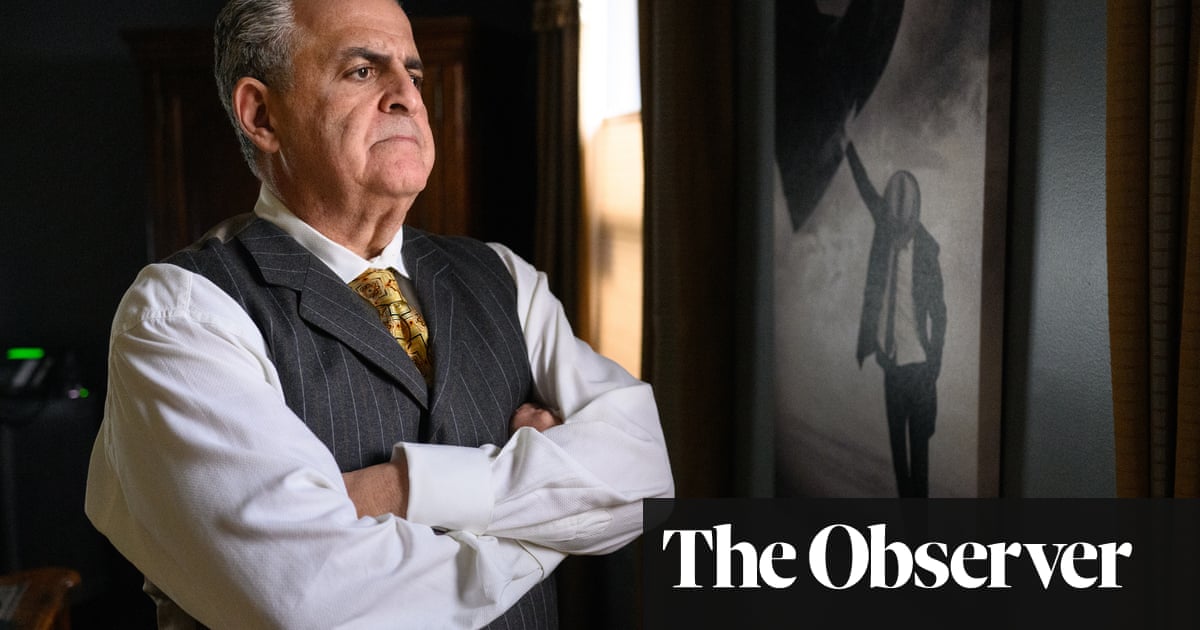Two tonnes of Huma Bhabha’s works greet you before you even reach the entrance of her new exhibition at the Barbican in London. They are four powerful ancient-looking giants, with rough-hewn surfaces, gouged and blackened (the effect achieved by first carving in cork, then casting in patinated bronze). With their enormous skull heads towering above you, baring pincers and rows of teeth, it’s as if you’ve stumbled on the set for an apocalyptic sci-fi film. “It seems they’re suddenly here, as if they’ve just come out of the elevator,” Bhabha says affectionately.
Bhabha is here to install her work alongside 10 sculptures by Alberto Giacometti, her first public display in the UK since 2020. “Encounters: Giacometti” is the first in a three-part exhibition series organised with the Giacometti Foundation, bringing contemporary artists – Bhabha being the first – into dialogue with the 20th-century Swiss sculptor in a brand new gallery at the Barbican, once the centre’s brasserie. It’s a bright L-shaped space on the second floor with wide views across the Barbican estate’s dyed-green waters.

Bhabha first encountered Giacometti’s work as an undergraduate at Rhode Island School of Design. Years later, when she made her first artwork sales, a Giacometti book was the first thing she bought with the money. “I was nervous of course to be in the same room with Giacometti”, Bhabha confesses, as we sit on the terrace talking, her works looking down on us. “But the works seem to be compatible, they’re enjoying each other’s company.”
“Encounters: Giacometti” emphasises the shared sensibilities between the two artists: angry, angsty figures that evoke a sense of ruin, destruction and existential anxiety; rough, urgently worked surfaces; stretched, fragmented and dismembered body parts – harbingers of desolation in a horrible reality. “Giacometti’s work was like that because of what he had experienced and the times he lived in, and I’m also aware of similar things. It’s interesting how times don’t change,” Bhabha says. “It’s the world we live in, it’s full of death. The amount of manmade destruction can really overpower you. It is hard to get away from it.”
There is synergy between their ideas and responses to the horrors of the world, but the results are often radically different: Bhabha’s dense, furious, cataclysmic; Giacometti’s awkward, vulnerable, delicate. Both artists crib classical poses from traditional sculpture: standing, seated, and reclining figures, but experiment with non-traditional expressions for them, merging the human form with all the other stuff that surrounds life. As Giacometti once put it: “I don’t sculpt people, I sculpt solitude.”
Though Bhabha has long acknowledged Giacometti as an influence, “I’m not interested in re-doing another artist’s work. It’s an absorbed kind of influence – I might think of him when I’m making a nose, or a head, or opening up a chest cavity. I am very attracted to the way he applies the clay and his mark-marking, which is almost graffiti-like.”

Bhabha grew up in Karachi, Pakistan, and moved to the US to study art, encouraged by her parents – her mother was a talented but unrecognised artist and Bhabha grew up surrounded by her paintings and drawings at home. She initially trained as a painter and printmaker, but in the 1990s after graduating began to put found objects together into three-dimensional pieces. “Even now technically my work is assemblage, I put different objects together from different places, and somehow they feel they have always been together.”
After 13 years living in New York, Bhabha and her husband (the artist Jason Fox) moved upstate to the more affordable Poughkeepsie, a small town in the Hudson River Valley region, where she still lives. When she first moved there, she worked for two years as a finisher for a taxidermist. It proved to be an important time. “The way they construct their dioramas and build armatures was very influential on my work at that point. I adapted how they used chickenwire and built armatures with wood.” She also amassed a collection of skulls, horns, and bones destined for the dump that still appear in her works today. “They thought it was funny that I collected that stuff.
“I’ve been collecting stuff for a long time – I don’t go out looking for a specific thing, I have a lot of chunks of wood, pieces of rusted metal, I’m very attracted to stuff like that. In America you find all kinds of things – people just take off their clothes and leave them there.” This mashup of materials is what gives Bhabha’s work its contemporary beat, while still incorporating traditional bronze, plaster, terracotta and clay. A pair of black rubber boots she found abandoned behind her first home in Poughkeepsie became the earliest work included in the Barbican show: a sculpture made for her first solo exhibition in 2004. The artist recently purchased it back at an auction. To the thick, industrial boots she added truncated legs, sculpted intuitively with foam spray then plaster, painted in contrasting skin tones. The boots appear to levitate on a raised plexi platform; under the feet is a remnant of a carpet from her childhood home in Pakistan. “It’s very much about being in love.”

“My work is very emotional and emotive,” Bhabha says. A work titled Special Guest Star lies on a tilted platform. It too represents a body, reclining or crawling up from the ground along a plywood plank. Its head consists of the inside of deer’s horns (from the taxidermy days), the body is Bhabha’s old scrunched-up T-shirt. In a “nod to Jasper Johns” a paintbrush is intended as a vagina; ornamental tin scraps a roof are slippers. “I’m trying to make my own language.”
A large seated figure, Mask of Dimitrios, almost collides with the low ceiling. Its clay legs are a direct reference to Giacometti’s mottled, pock-marked textures; two plastic bags are suspended in a void where the chest should be. “Initially I thought of them as breasts, but they also could be lungs”. It’s humorous, and gnarly, but Bhabha has become the queen of the grotesque. “I don’t see the grotesque as a negative, it’s fine!” The mask-like face is in fact a mould for a different work, salvaged from the foundry which cast Bhabha’s sculptures. Works are often spawned from each other, adding to the unpredictable evolution of Bhabha’s work.
Another important reference for Bhabha is cinema – especially the handcrafted special effects of 1980s horror films, though she doesn’t like “camp”. “Sci-fi and horror is a genre I’ve enjoyed most of my life, I guess I have a high tolerance for it – and there’s not much else to do where I live. It’s all CGI now which is OK, but there’s a bit of that density lost, it feels hollow.” Her monstrous, hybrid forms are freighted with heated desires and dark humour, collecting in serried layers of materials. It’s an intense viewing experience. “You might find it scary or too confrontational, but you’re still attracted to it, you can’t just walk away from it – that’s important for me, to keep you coming back.”

 14 hours ago
6
14 hours ago
6




